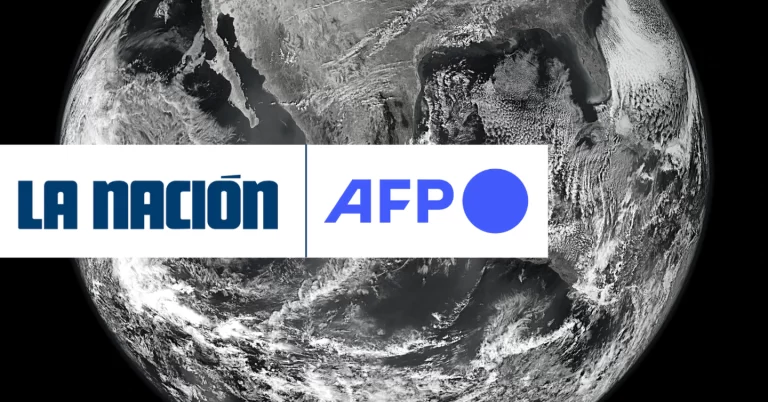
María Celia Navarro, 73, smiles nostalgically as she remembers what it was like to bathe under the shower jet, a luxury now unthinkable due to the unprecedented shortage of water that hits the Mexican city of Monterrey (north).
Surrounded by majestic mountains and some 200 kilometers from the border with the United States, this city of 5.3 million inhabitants, capital of the prosperous state of Nuevo León, developed according to a first world model, unaware of problems of lack of services or of marginalization, chronic in other regions of Mexico.
But for several weeks and in the midst of a heat wave and little rain, Monterrey and its metropolitan area, the second largest city in the country, have had running water only a few hours a day.
In the neighborhoods built on the hills, the most disadvantaged go more than 50 days without seeing a drop in the tap.
“I am very desperate for water,” says Navarro, who is in delicate health and who, she confesses, lives “very depressed” locked up in her small house in the municipality of García, barely ventilated and which since morning has a suffocating atmosphere due to the temperature that close to 40 centigrade.
Never, say the elders of this neighborhood, had the “royals” had to live with little water.
Despite being a modern and thriving city, home to transnational firms, there are few homes equipped with water tanks, common in other large cities such as Mexico City.
“They weren’t needed,” summarizes Javier Torres, a municipal councilor who daily supervises how trucks loaded with water distribute entire families in García, including children, who run out with buckets to get hold of the precious liquid.
Many have improvised containers inside their small houses, unable to acquire a large deposit due to skyrocketing prices.
With a semi-arid climate, every summer, when the average temperature is around 38 degrees Celsius, the state government has to monitor the level of three dams, its main source of supply.
According to data from the National Water Information System at the end of June, the most critical situation is registered in the Cerro Prieto dam, at less than 1% of its capacity, while La Boca was at 7% and El Cuchillo at 44%. .
“A very important fissure was generated in a pipeline” that connects to one of the dams, is one of the explanations given by Samuel García, the 34-year-old governor of Nuevo León, whose youthful style of communication has unleashed criticism and acid ridicule in political media.
Bombing the few clouds that appear with chemicals to cause rain, a remedy tried in other regions of Mexico, is one of the governor’s solutions.
“I am not Tlaloc (god of the rain), but if today the humidity arrives as it can be seen and we hit the bombardment (…) we already scrubbed (we solved it) for at least a few weeks,” he proclaimed days ago.
But for biologist Antonio Hernández, an expert on Monterrey’s environmental problems, this prosperous city faces a “scenario of uncertainty” resulting from scant rainfall in 15 months and the absence of a true policy to manage water resources.
The thriving industry, dominated by the production of soft drinks, beer, steel and cement, has been subject to very few restrictions, as have agricultural and livestock activities, he explains.
“Then they think of radicalizations that companies have to be closed, it seems to me that at this moment that stage is unthinkable (…) I speak rather of regulations that must be applicable to all uses and this includes commercial ones,” explains Antonio Hernandez.
Last week, after negotiations with federal authorities, industrialists and farmers, they agreed to provide 37% of the water the city needs.
“Companies have stopped functions a few days a week precisely to take care of water (…) there are companies that have sent us water to be able to supply some of the neighborhoods,” says Alderman Javier Torres.
On the outskirts of the city, the La Boca dam looks as empty as the dozen restaurants that are located on a modern boardwalk that was renovated a year ago and that in spring looked full of visitors.
The photos of the dam displayed in shops show a landscape worthy of a beach, including waves that threatened even the restaurants with rain.
Now only something similar to a desolate seabed remains, with muddy areas, remains of shells and boats that show off their propellers in the air.
“We were barely taking a break from the pandemic, but it was very short, almost nothing, and the drought began,” laments Adrian Luna, a 26-year-old waiter who fears that horseback rides or boat rides on the dam will end up like a distant future. memory.
wk/st/gm